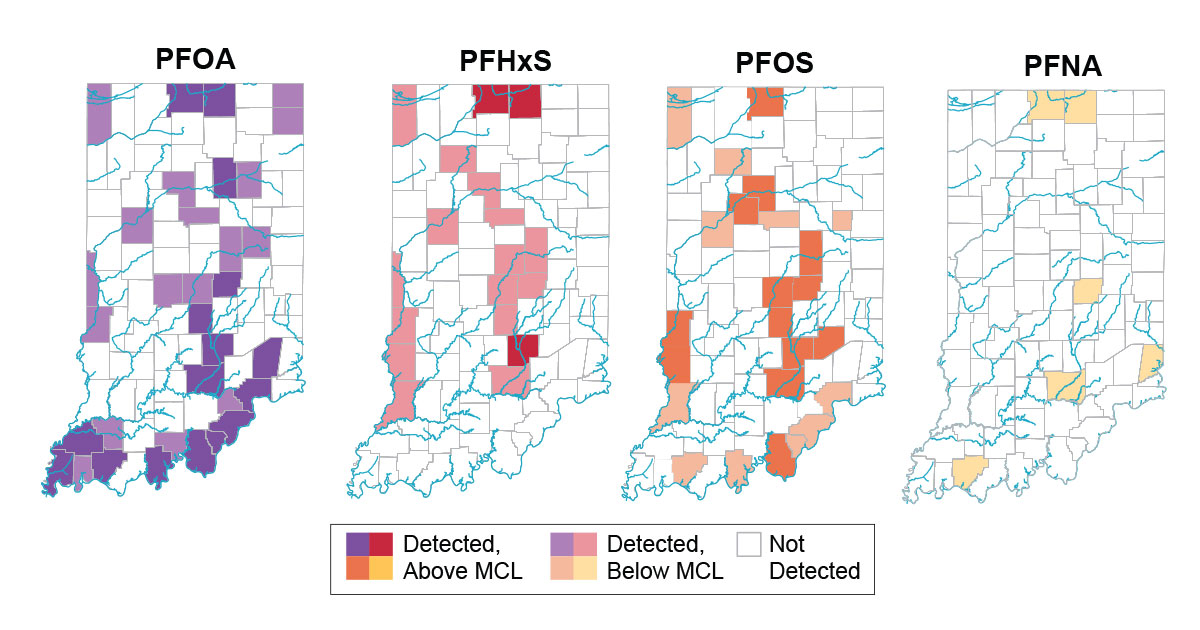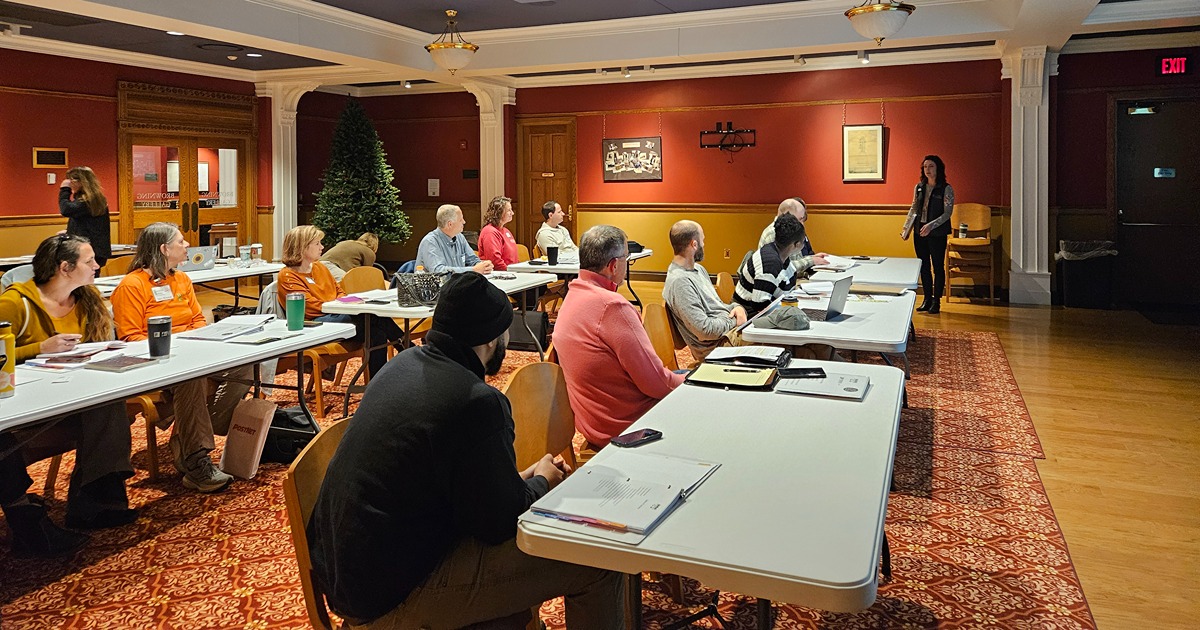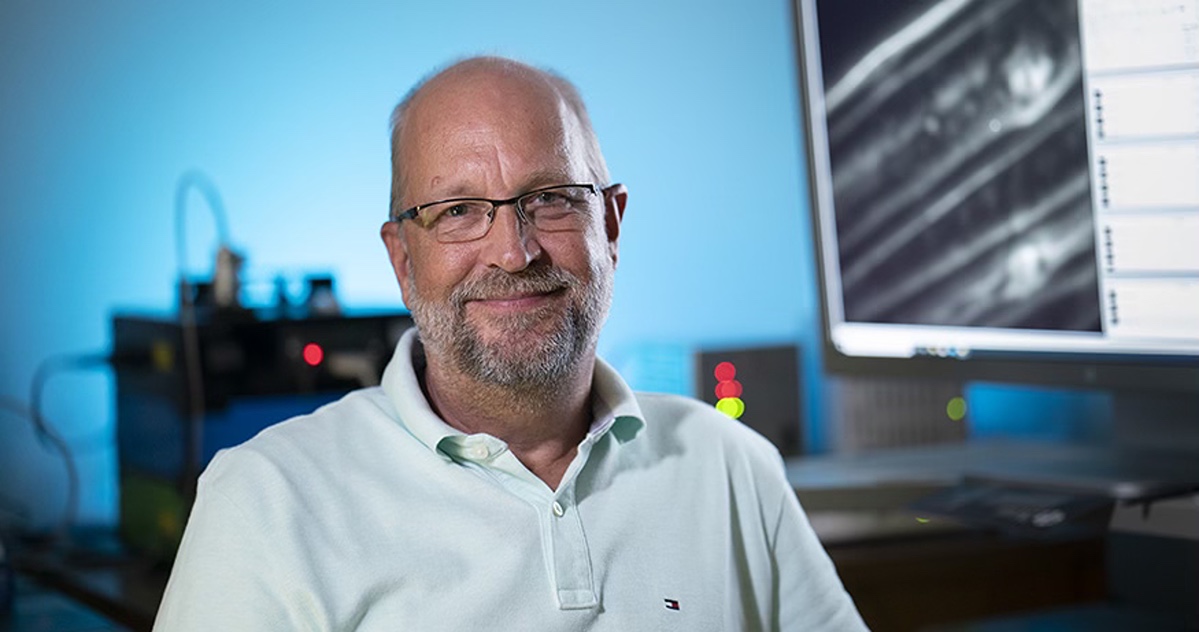Purdue’s Institute for a Sustainable Future publishes first look at ‘forever chemicals’ statewide
WEST LAFAYETTE, Ind. — Purdue University’s Institute for a Sustainable Future (ISF) has released the first Indiana Statewide PFAS Assessment report summarizing the uses of, exposures to and sources of contamination from PFAS across the state. Perfluoroalkyl and polyfluoroalkyl substances (PFAS) are commonly known as “forever chemicals” because they persist in the environment.
PFAS are used to manufacture a wide variety of industrial and consumer products, such as firefighting foams, stain-repellent coatings on carpets and furniture, nonstick pans, and cosmetics. They are increasingly recognized as a widespread hazard to human and environmental health, including in Indiana.
The report serves as a comprehensive review of what is known about PFAS in general and provides specific information on PFAS in Indiana. It describes what PFAS are, where they come from, how they move through the environment and what is known about potential health impacts.
The report was led by Tyler Hoskins, research assistant professor in the Department of Forestry and Natural Resources and part-time research scientist for ISF. Contributions were made from the ISF’s strategic research team in PFAS, and PFAS experts from Indiana University Bloomington, the University of Notre Dame and the Illinois-Indiana Sea Grant, as well as state agencies like the Indiana Department of Environmental Management.
“This report brings together PFAS experts from across the state and examines what we know and don’t know about PFAS here in our own backyard,” Hoskins said. “Indiana has a large group of passionate and talented people working in this space, across academia, government and industry. One of our key findings was that we need some central planning to leverage all this expertise and energy in a way that directly benefits Hoosiers. We hope this report is a first step toward a PFAS action plan for our state.”
Key findings of the report include the ways Indiana residents are exposed to PFAS, often through contaminated drinking water. Another particular concern is the presence of PFAS in biosolids applied to agricultural land as fertilizer. Runoff or tile-drain discharge to nearby ponds and streams may lead to unacceptable levels in organisms like fish.
The report also describes how consumers can reduce their health risks by identifying and avoiding the purchase and use of products likely to contain PFAS. In addition, it recommends how individuals, legislative and regulatory agencies, and the PFAS research community can better understand this widespread class of chemicals and work together to mitigate PFAS exposure and effects.
“We need cooperation across academia, industry and government,” Hoskins said. “All of us need to have the same goals. Let’s reduce PFAS use where we can, engineer PFAS replacement products that are not toxic as quickly as possible, and work together to reduce the release of these chemicals into the environment.”
The report is free and available for download here.
About the Institute for a Sustainable Future
Purdue University’s Institute for a Sustainable Future fosters and promotes research, partnerships and engagement in areas including the environment, climate impacts and resilience, food-energy-water security, human and biosphere health, and sustainability as broadly defined by the Sustainable Development Goals. The complex, multifactor and pressing nature of the challenges and opportunities in these areas require a collaborative, transdisciplinary approach. This institute supports the research and development needed to provide viable solutions by connecting faculty and researchers, and by forging linkages between disciplines and communities within Purdue and beyond. In this way, the institute aligns with Purdue’s land-grant mission of building human capital, advancing research focused on our world’s most important problems and engaging deeply with our partners.
About Purdue Agriculture
Purdue University’s College of Agriculture is one of the world’s leading colleges of agricultural, food, life and natural resource sciences. The college is committed to preparing students to make a difference in whatever careers they pursue; stretching the frontiers of science to discover solutions to some of our most pressing global, regional and local challenges; and, through Purdue Extension and other engagement programs, educating the people of Indiana, the nation and the world to improve their lives and livelihoods. To learn more about Purdue Agriculture, visit this site.
About Purdue University
Purdue University is a public research university leading with excellence at scale. Ranked among top 10 public universities in the United States, Purdue discovers, disseminates and deploys knowledge with a quality and at a scale second to none. More than 107,000 students study at Purdue across multiple campuses, locations and modalities, including more than 58,000 at our main campus in West Lafayette and Indianapolis. Committed to affordability and accessibility, Purdue’s main campus has frozen tuition 14 years in a row. See how Purdue never stops in the persistent pursuit of the next giant leap — including its comprehensive urban expansion, the Mitch Daniels School of Business, Purdue Computes and the One Health initiative — at https://www.purdue.edu/president/strategic-initiatives.
Writer: Stacey Mickelbart, smickelb@purdue.edu
Media contact: Devyn Ashlea Raver, draver@purdue.edu
Sources: Tyler Hoskins, tdhoskin@purdue.edu
Agricultural Communications: Maureen Manier, mmanier@purdue.edu, 765-494-8415
Journalist Assets: Publication images can be obtained at this link
This research is a part of Purdue’s presidential One Health initiative, which involves research at the intersection of human, animal and plant health and well-being.




